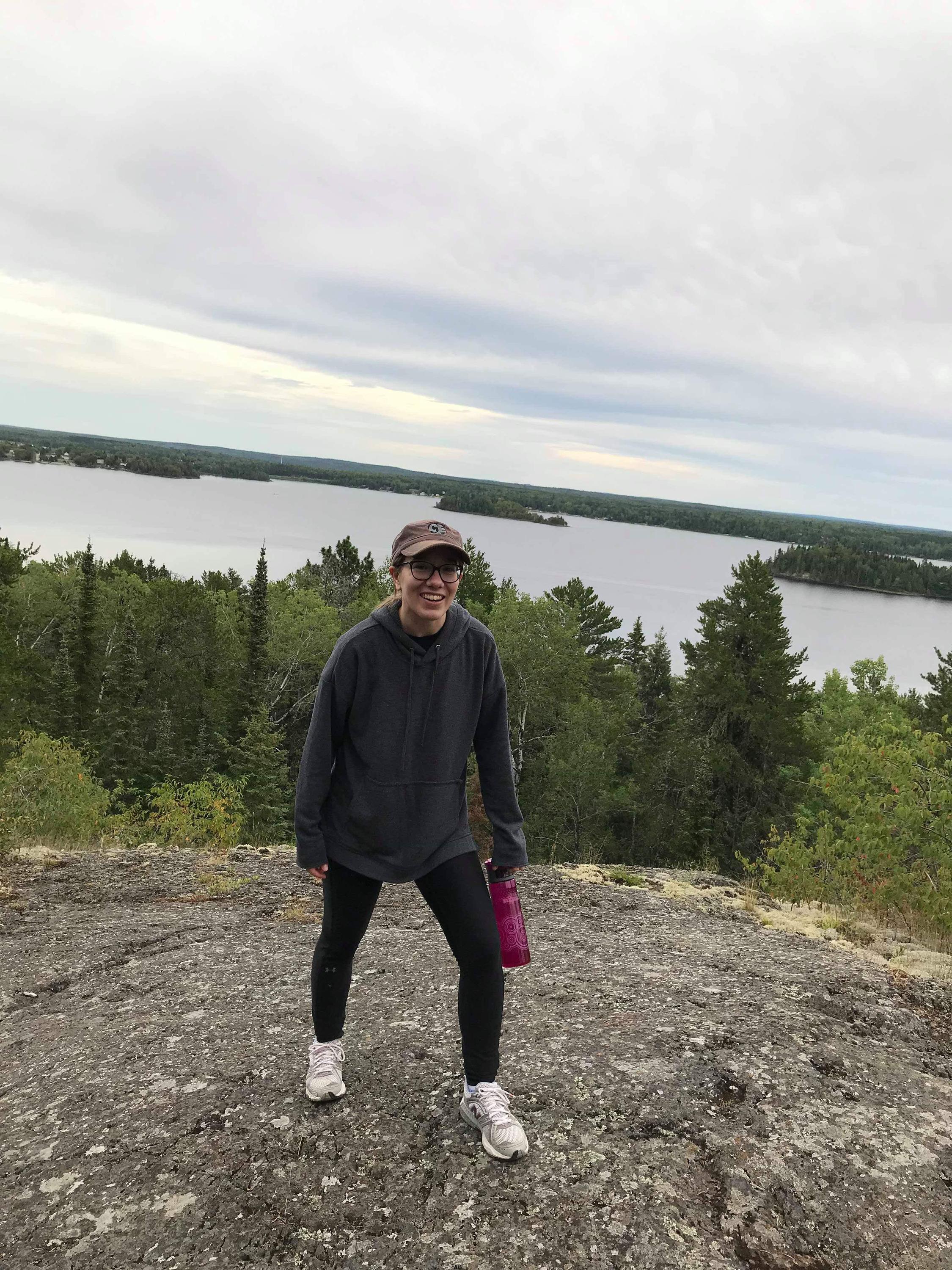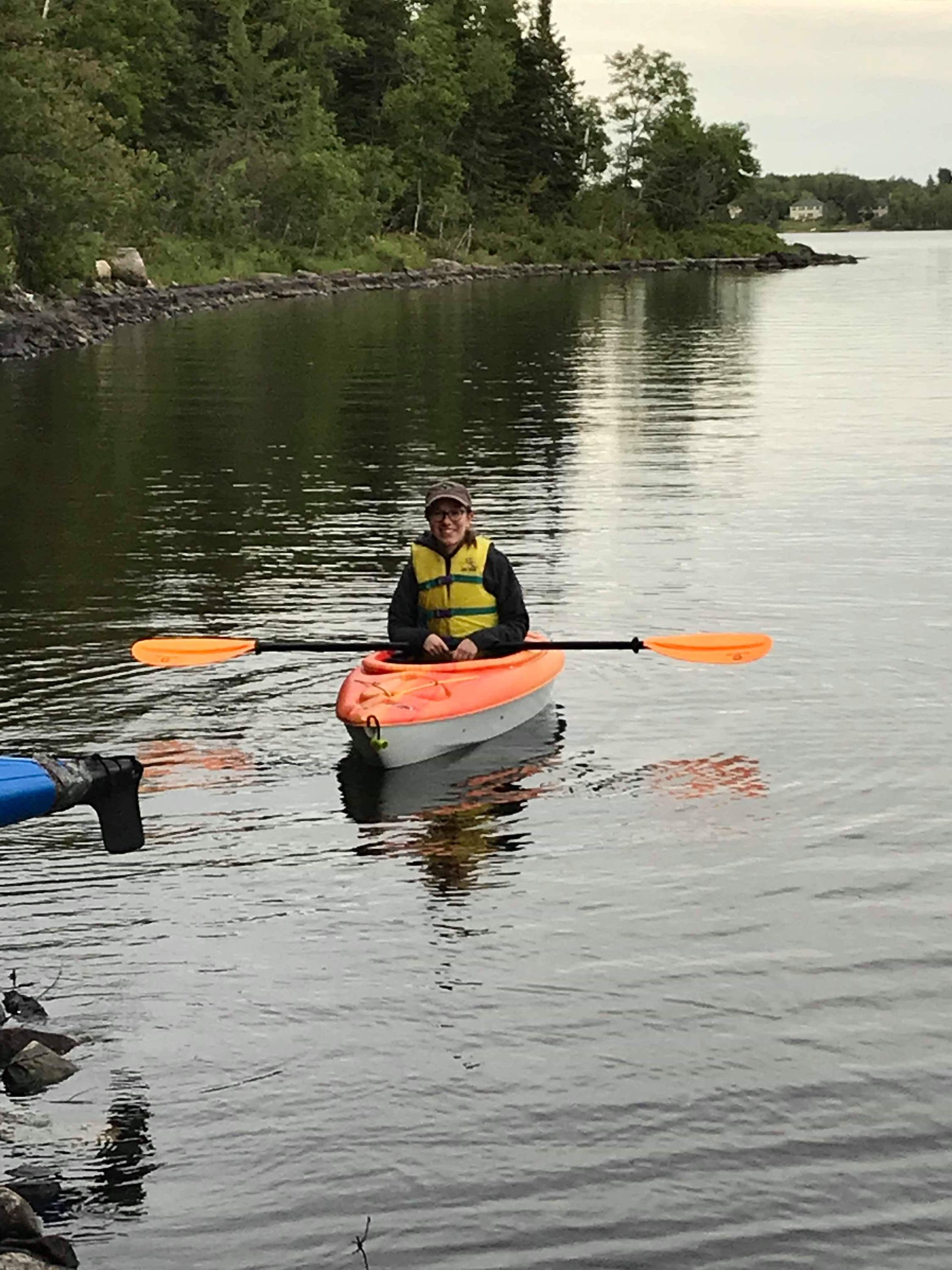
Alumnus now working in Sioux Lookout after rotations experience
Christine Sorin, Rx2019 alumnus, is originally from Manitoba and thought she’d be moving back there after graduation. But her experiences on her fourth-year rotation changed her mind: Christine and Rx2019 classmate Nancy Xiao were the first students to complete their senior practical pharmacy placements in Sioux Lookout.
Sioux Lookout is considered part of the Thunder Bay rotations region, but the remote community of just over 5,000 people is a good five-and-a-half-hour drive north of that city. In March 2019, Christine drove seven hours from her Manitoba hometown to Sioux Lookout. Over the six-month rotation, Christine and Nancy practiced at three different sites for eight weeks each: a hospital, a community pharmacy, and a family health team.
“My first rotation site was at Meno Ya Win Health Centre, the hospital where I’m now working,” says Christine. “It was challenging at first: often there is no clinical pharmacist on site – though there’s always a telepharmacist or manager available – and so I was allowed to work very independently.”
Christine participated in rounds where the interprofessional team would meet and discuss cases.
“Since Sioux Lookout has the most substantial hospital that far north, many patients are flown in from even more remote communities,” she said.
Almost all the patients are Indigenous, and often interpreters were used to communicate.
It was interesting to experience the process of working with an interpreter. Often there is no direct word in Oji-Cree to communicate the idea the health care provider has – both parties have to be patient to ensure information is accurately conveyed.

Christine was the first pharmacy student at the health centre and both she and Nancy, who completed her inpatient rotation later, had to carve out a space where pharmacy students could contribute. Using resources, offering recommendations, and assessing overall systems-level issues were important roles that they played. The health centre serves a wide geographic area, and Christine saw complex cases including tuberculosis and autoimmune disorders.
“Practicing in the north has its own unique challenges. For example, it’s difficult to discharge a stroke patient since most northern communities don’t have homecare options,” Christine explains. “Accessibility renovations for entrances and washrooms can be very costly, and I’ve had to master navigating the Non-Insured Health Benefits Program for Indigenous Canadians.”
Christine hiking a picturesque trail
Due to staffing shortages, the health centre and the other pharmacies in the community all make use of technology to fill gaps. Telepharmacy consultations are common and machines are used to support the dosing and dispensing procedures. Both the health centre and the community pharmacy provide care and resources to the disparate northern communities that surround Sioux Lookout, and medications and patients are sent to and from the community by plane.
Over the course of her rotation, Christine travelled on six trips to northern communities to offer a variety of services, from education to medication reviews for patients.
“Our experience with Tikinagan Child Protective Services in the area of Big Trout – also known as Kitchenuhmaykoosib Inninuwug First Nation – was particularly eye-opening,” she remembers. “We talked to lots of people there who help children who are placed in group homes. They are counsellors but were unsure about how to support the children with their medication needs and side effects.”
The pharmacy students presented education on antipsychotic medications, cannabis, and naloxone. While there, they had an opportunity to get a tour with a local community member who talked about the fun and challenges of living in such a remote area. They learned that the sixteen-hour drive from Big Trout to Sioux Lookout is only possible when the ice roads are open from the lake freezing over.
“I loved the opportunity to learn from locals,” says Christine. “People in the north have a great sense of humour and if you come in with the right attitude it can be such a rewarding experience. You have to want to be here and the locals will recognize that.”
The more time she spent in Sioux Lookout and its surrounding area, the more Christine’s career goals began to shift.
We hear about systemic racism in the classroom but it’s different to be able to appreciate the effects of it first-hand. My experiences in Sioux Lookout made me want to be the kind of pharmacist who provides equitable health care. At the hospital here, I have so many opportunities to do just that.

Living in Sioux Lookout brings its own challenges though. The cost of living in northern Ontario is high – rent and food add up quickly. But it’s also a very collaborative community with people who are friendly and welcoming.
“Keep an open mind,” Christine says to any who’s considering working in a northern community. “It can seem scary to travel this far – to be this far away from big cities – but the people are so supportive. They want you to enjoy your time here. There are so many types of health professionals in this community and you get to learn from and support each other.”
Christine kayaking on the river